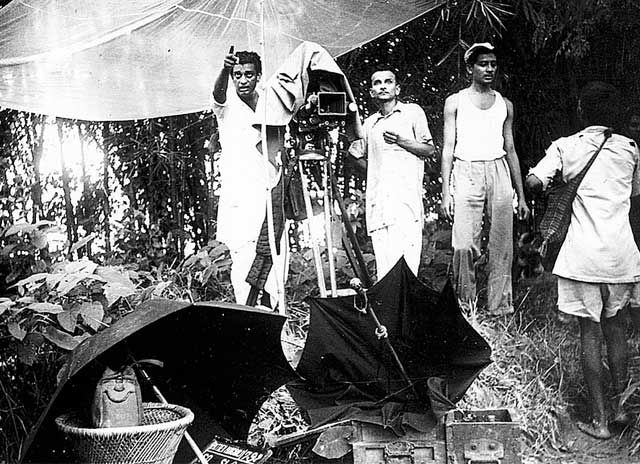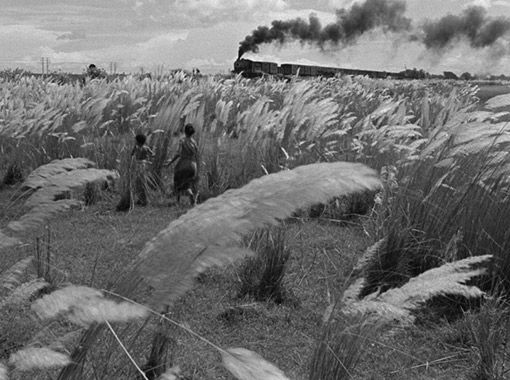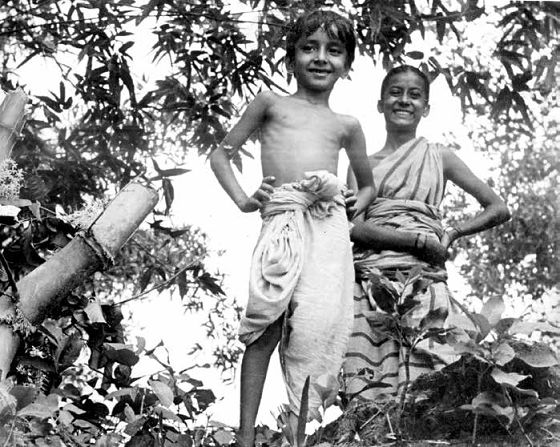Pather Panchali: The Struggle & The Legacy
Jun 09, 2019 • 179 views
Pather Panchali: The Struggle & The Legacy
Pather Panchali is a Bengali film made by Satyajit Ray and was released in 1955. The film put Indian cinema on the global stage and went on to become one of the most celebrated and influential films to be ever made.
Satyajit Ray was heavily inspired by Italian filmmaker Vittorio de Sica’s neo-realist film, Bicycle Thieves. India, at that point of time, was dwelling in populist films and films of social seriousness and relevance were discouraged. Ray, however, was determined to make a film of substantial standard. He had gotten his hands on the book by Bibhuti Bhushan Bandyopadhyay of the same name. In order to gain experience and learn the craft of filmmaking, Satyajit Ray worked with the French filmmaker, Jean Renoir, who was in India shooting his film, The River. He pitched the idea of making Pather Panchali to Revoir who was fascinated by Ray’s idea and encouraged him to carry on with his project.

Ray did not have the backing of any major film studio, was fairly unexposed to the craft of filmmaking and gathered himself a team of three other people. All he had was the determination to make the film. He gathered himself a tiny crew. None of them had any prior experience either. Subrata Mitra, after extensive persuasion, agreed for photography of the film, Anil Choudhury was the production controller and Bansi Chandra Gupta the Production Designer. He approached many theatre artists, most of whom were retired, to act for his film. Few actors, like Subir Banerjee who played Apu and Karuna Banerjee who played the mother, had no prior experience at all. With this inexperienced crew, Satyajit Ray set on the journey to make Pather panchali, the film which would go on to become one of the best films of the world.

With the lack of proper financing, it was very difficult to make the film. The preparations for the film had started by 1950, but the principal photography started only by 1952. And little did anybody knew, that the shooting would continue for 2-3 years more. There was a very small budget for the film which ran out pretty quickly. Ray somehow managed to find a producer who agreed to fund the film. Ray was provided with a sizeable amount and the producer agreed that he would fund the film further if he was impressed by Ray’s work. It wasn’t very long before this amount also ran out. The producer was unable to further finance the film due to his unforeseen troubles. Ray had to sell his wife’s jewelry to continuing with filming. Finally, he approached the Government for budget. The film was misinterpreted and it was thought that the film was about roads and rural development. The rest of the film was financed by the PWD.

The photography for the film ended in 1955 and post-production began immediately. Ray insisted Pandit Ravi Shankar to create the score for the film. Ravi Shankar, with his busy schedule, was unable to provide music for the full film. In many scenes the sore was improvised by Ray’s cinematographer.

The film was received very well by audience and critics. It was unlike any film the Indian audience had ever come across earlier. The film was screened at many major festivals and received several national and international awards. The film such a profound impact that filmmaker Tarun Majumdar along with 12 of his friends went out on a procession urging people to watch the film. This film headlined the movement of Indian Parallel Cinema along with works of Ray’s contemporaries like Ritwik Ghatak and Mrinal Sen. Famous filmmakers like Martin Scorsese was mesmerized by this film and Ray’s work were a huge influence on him. Filmmakers like Shyam Benegal and Govind Nihalni continued to follow Ray’s footsteps.
The original film rolls were kept at the Henderson’s Film Laboratories in London. When an accidental fire in the lab destroyed the films, the Academy of Motion Picture Arts and Sciences took the films in their possession and there was a very expensive restoration process of the original film rolls of Pather Panchali. The project was known as Save Apu. The original film rolls are kept in the Academy Film Archives as a tribute to the filmmaker.
